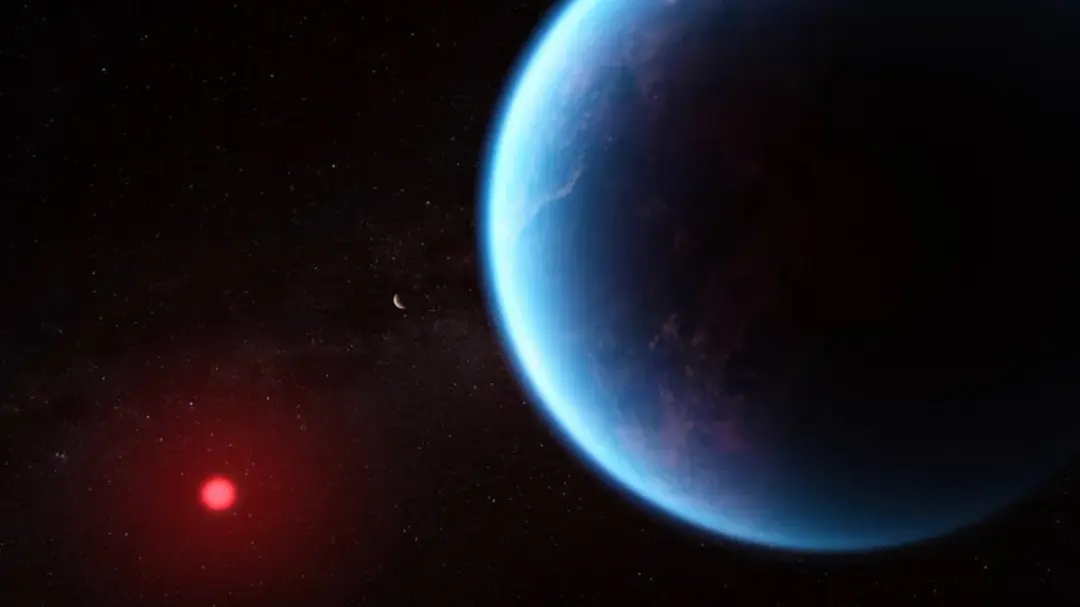Webb found carbon dioxide and methane in the exoplanet's atmosphere.
Exoplanet K2-18b is an ocean planet, an 8,6 times Earth's mass world, that is covered by ocean. The planet's size is something between Earth And Neptune. The planet is one of them that orbits a red dwarf in its habitable zone. And that thing makes those findings interesting.
The water world might not host intelligent lifeforms. But there is a possibility that in that giant ocean swims some kind of organisms. The existence of those organisms like cells and amoebas, and probably fish-like creatures, is not sure.
Confirming those things requires more observations. But methane and carbon dioxide are promising things that could show the existence of some underwater organisms. But the distance to K2-18b is 120 light years.
And that means we cannot confirm the existence of those hypothetical primitive creatures. And at that point, I must say that at least on Earth even the tiniest organisms traveled through as long evolution as humans. And that thing causes interesting visions. Confirming the existence of the fish-shaped, non-intelligent aliens is far more difficult than confirming the intelligent and technically advanced race's existence.
The reason for that is the intelligent, technically advanced civilization leaves technical signatures like pollution and night lights. The problem is that if the aliens are at the level of cavemen they would not leave strong technical signatures.
The water layer protects those lifeforms against the red dwarf's flares. And that means the K2-18b is a good candidate for hosting primitive lifeforms. In some visions, the future astronauts could live under the ice in stations that hover in oceans of Jupiter and Saturn's icy moon. In that case, the water layer covers astronauts against cosmic radiation.
There is the possibility that primitive lifeforms that could look like crustaceans or fishes could be quite common in the universe. The thing is that those lifeforms are interesting, and if somebody could confirm to find a planet that hosts extraterrestrial lifeforms that would be a scientific sensation. But those primitive lifeforms are not a thing that affects us. The thing that researchers want and are afraid to find is an intelligent, technically advanced culture.
https://interestingengineering.com/science/water-on-exoplanet-k2-18b-webb-finds-possible-molecular-clues
https://scitechdaily.com/beyond-earth-webb-space-telescope-detects-key-molecules-on-exoplanet-k2-18-b/





No comments:
Post a Comment
Note: Only a member of this blog may post a comment.